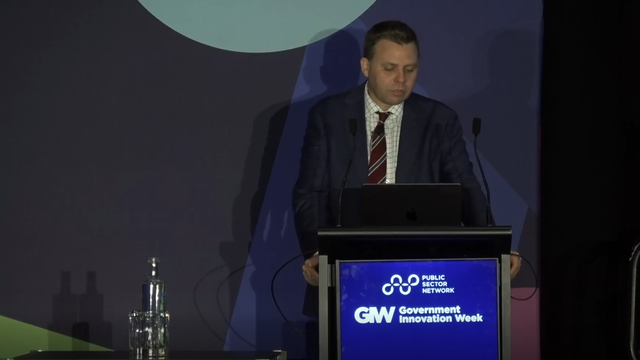
The future of healthcare infrastructure is being redefined—and Robert Hofmann, Director of Redevelopment Projects at Hamilton Health Sciences (HHS), is at the forefront of this transformation. With two major redevelopment initiatives underway—West Lincoln Memorial Hospital (WLMH) and Juravinski Hospital (JH)—Hofmann is shaping facilities that prioritize resilience, adaptability, and cutting-edge innovation to meet Canada’s evolving healthcare needs.
Ahead of his appearance at the Healthcare Innovation Showcase, Hofmann shares an inside look at these groundbreaking projects and how they’re setting a new standard for emergency preparedness, sustainability, and patient-centered care.
Building for the Future: Resilient Healthcare Infrastructure
Q: Can you share an overview of the redevelopment projects at West Lincoln Memorial Hospital and Juravinski Hospital? How do they reflect the need for resilient healthcare infrastructure in Canada?
A: These projects are about more than just replacing old buildings—they’re about designing hospitals that can withstand the tests of time, patient needs, and unforeseen crises.
West Lincoln Memorial Hospital (WLMH) – Grimsby, ON
A brand-new 185,000 sq. ft. facility replacing a 1940s-era hospital no longer suited for modern care.
55 inpatient beds, 6 maternal/newborn suites—all private rooms to enhance infection control and patient dignity.
3 state-of-the-art operating rooms + 1 procedure room, expanding surgical capacity for the growing community.
Sustainable, energy-efficient design aligned with green building standards.
Juravinski Hospital (JH) – Hamilton, ON
A multi-phase redevelopment including a new inpatient tower, renovated spaces, and demolition of outdated structures.
Net increase of 170 beds (534 total upon completion) while maintaining services during construction.
Focus on modernizing infrastructure to support advanced medical technologies and patient care models.
These projects are critical because they future-proof healthcare delivery, ensuring facilities can adapt to pandemics, natural disasters, and evolving medical needs.
Disaster-Resistant Design: Preparing for the Unexpected
Q: What key elements ensure healthcare facilities are disaster-resistant?
A: Modern hospitals must be more than just treatment centers—they must be crisis-ready command hubs.
Key disaster-resistant features at WLMH include:
- Negative Pressure Isolation Zones – Containing infectious outbreaks without disrupting other care.
- Surge Capacity Planning – Flexible spaces that can rapidly expand to handle mass casualty events.
- On-Site Decontamination Units – Including Chemical, Biological, Radiological, Nuclear (CBRN) response areas in the parking lot and ambulance bay.
- Dedicated Emergency Command Center – A 15-person crisis management hub (normally a boardroom) equipped for real-time coordination.
We’re not just building for today’s emergencies—we’re anticipating tomorrow’s threats," says Hofmann.
Smart Hospitals: How Technology is Transforming Crisis Response
Q: How is advanced tech being integrated to improve real-time emergency coordination?
A: The new WLMH will be a fully connected smart hospital, featuring:
🔹 Ontario’s Public Safety Radio Network (PSRN) – Seamless communication between hospital staff and first responders during disasters.
🔹 Real-Time Locating Systems (RTLS) – Tracking patients, staff, and equipment for faster response.
🔹 AI-Powered Digital Signage & Wayfinding – Dynamic messaging to guide patients and staff during emergencies.
🔹 Integrated Security Systems – Access control, surveillance, and intercoms for lockdown readiness.
"When seconds count, technology ensures the right people get the right information instantly"
The Future of Resilient Healthcare Design
Q: What trends should Canadian hospitals focus on?
A: With increasing extreme weather events, future designs must account for:
Flood and heat mitigation.
Tornado-resistant structures.
Modular, adaptable spaces for rapid response.
Join the Conversation at the Healthcare Innovation Showcase
Robert Hofmann’s work at Hamilton Health Sciences exemplifies how forward-thinking design, technology, and emergency preparedness can revolutionize patient care.
Want to learn more? Don’t miss his session at the Healthcare Innovation Showcase—where industry leaders will explore the next wave of healthcare transformation.
Register Now and be part of the future of healthcare!

































